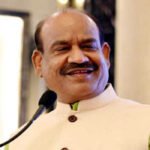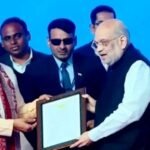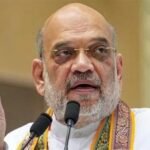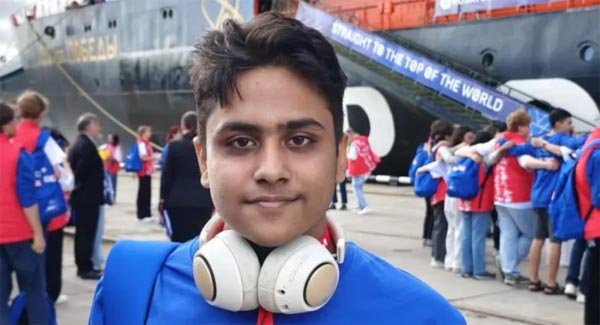By Venkatachari Jagannathan
Chennai, Aug 21 (UNI) Fifteen-year-old Aayush Goyal, a Class 11 student of St Xavier’s Collegiate School in Kolkata, has touched the North Pole on a Russian icebreaker, said his Chartered Accountant father, Sushil Kumar Goyal.
“He reached the North Pole a couple of days back. He is on his way back to Murmansk, a Russian port city,” Sushil Kumar Goyal told UNI from Kolkata.
“We are all proud that he is the first person from our family to have travelled in an icebreaker to the North Pole,” Sushil Kumar Goyal added.
Aayush represents India on Rosatom’s Arctic expedition aboard the 50 Let Pobedy nuclear icebreaker, said Rosatom.
Representatives of 21 countries took to the ice parading their national flags, many of them being the first people from their countries to visit the North Pole.
Competing against about 4,000 non-Russian students in an international competition organised by the Russian integrated nuclear power major Rosatom, Aayush earned his spot to travel to the North Pole.
66 students aged 14 to 16 years from 21 countries were part of the expedition.
Having landed at 90° North latitude, where all meridians converge, school students from 21 countries around the world made the shortest round-the-world trip, as well as tested Russian space rovers at the North Pole.
“The teams operated the space rovers, symbolically named Kurchatov and Korolev, from a distance, guided only by camera information, as in real-life exploration of distant planets. The teams had the task to explore and pass the obstacle courses as quickly as possible without seeing the rovers directly, as a mission control centre does in real settings,” said Andrey Babkin, an expert of the Icebreaker of Knowledge educational programme and Russian test cosmonaut.
Rosatom’s sixth expedition of the Icebreaker of Knowledge is dedicated to the 80th anniversary of the Russian nuclear industry and the 500th anniversary of Russia’s beginning to explore the Northern sea route.
Meanwhile, celebrations for the 80 years of the Russian nuclear power industry kick-started today in the city of Nizhny Novgorod with the hosting of `Era of Dreamers’, said Russia’s integrated nuclear power major Rosatom.
Incidentally, India and Russia have agreed to build six 1,000 MW nuclear power plants in Tamil Nadu. Out of the six, two have started commercial production, and the remaining four are under various stages of construction.
To date, India has imported large-sized nuclear reactors only from Russia.
According to Rosatom, the large-scale concert at Nizhny Novgorod will feature elements of a theatricalperformance, directed by Igor Krutoy, at the city’s main stadium and is expected to attract approximately 30,000 spectators, including 20,000 employees of Rosatom Companies.
From August 21, the scientific and artistic exhibition “Atom. Future” will be on display at Nizhny Novgorod’s Packhouses cultural centre.
The exhibition is inspired by future technologies that nuclear science and industry provide for humanity.
“Atom. Future” is the fruit of joint efforts by young artists, scientists, architects, and multimedia specialists. Along with art objects, paintings, posters, and multimedia installations, visitors will have the opportunity to see large-scale mock-ups of objects of the future, such as nuclear icebreakers, power units, and space rockets.
The exhibition will also present modern high-tech devices such as a bioprinter, a spacesuit for the Mars mission, as well as existing technologies that make that future possible, Rosatom said.
It was on August 20, 1945, that Russia established a Special Committee on Atomic Energy.
In response to the threat posed by the United States, the country created nuclear weapons within four years (RDS-1 bomb successfully tested in 1949).
This led to the USSR becoming a pioneer and leader in the peaceful use of nuclear energy.
Domestic specialists built the first nuclear power plant in Obninsk in 1954 and the first nuclear icebreaker Lenin was created to help explore the Arctic in 1959.
Rosatom said the main theme of the anniversary year can be expressed in three words: pride, inspiration, and dream.
The industry founders’ feats have been a source of pride for nuclear scientists, who are inspired by the achievements of previous generations. They also plan to push forward and expand the possibilities.
The 80th anniversary is being celebrated with various events, including the main ones, which are the performance in Nizhny Novgorod and the World Atomic Week international forum that will be held in Moscow later this year.











